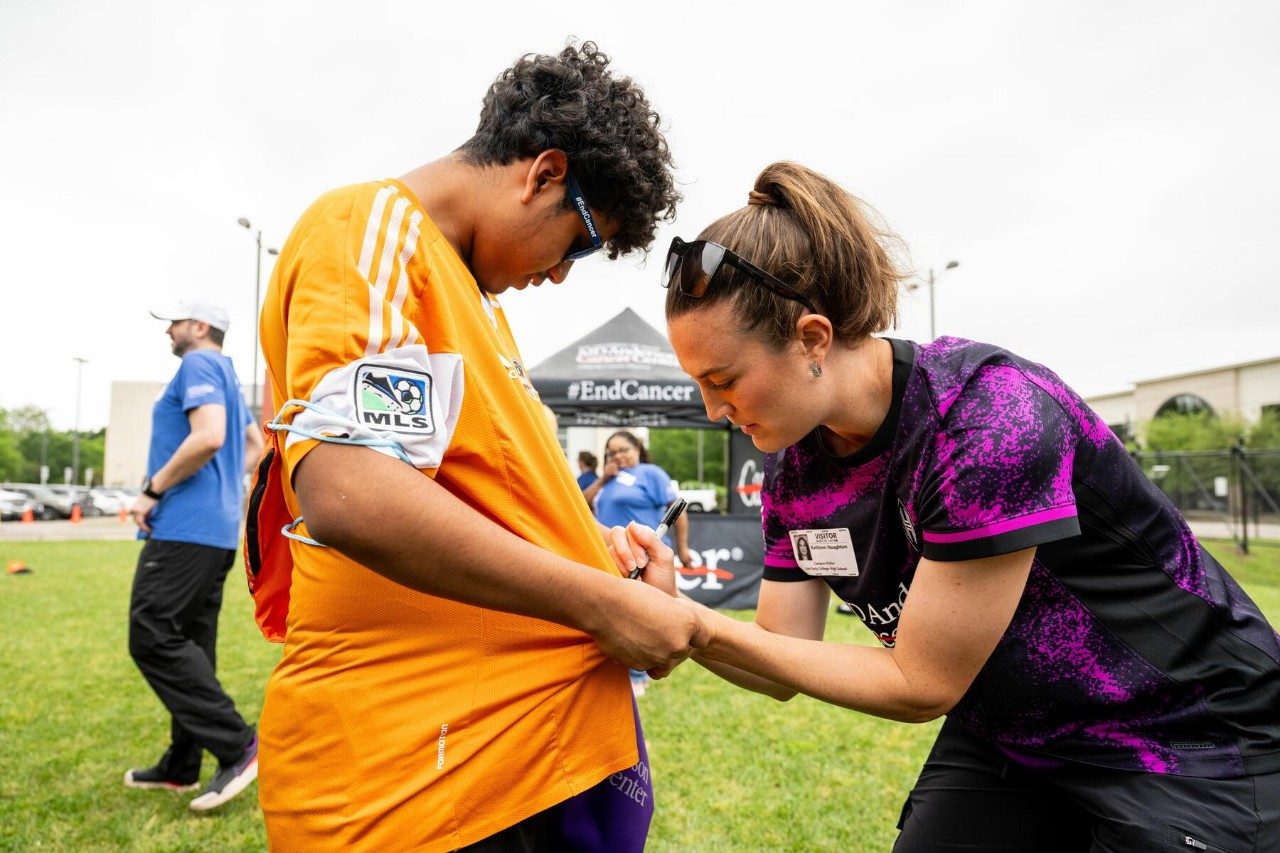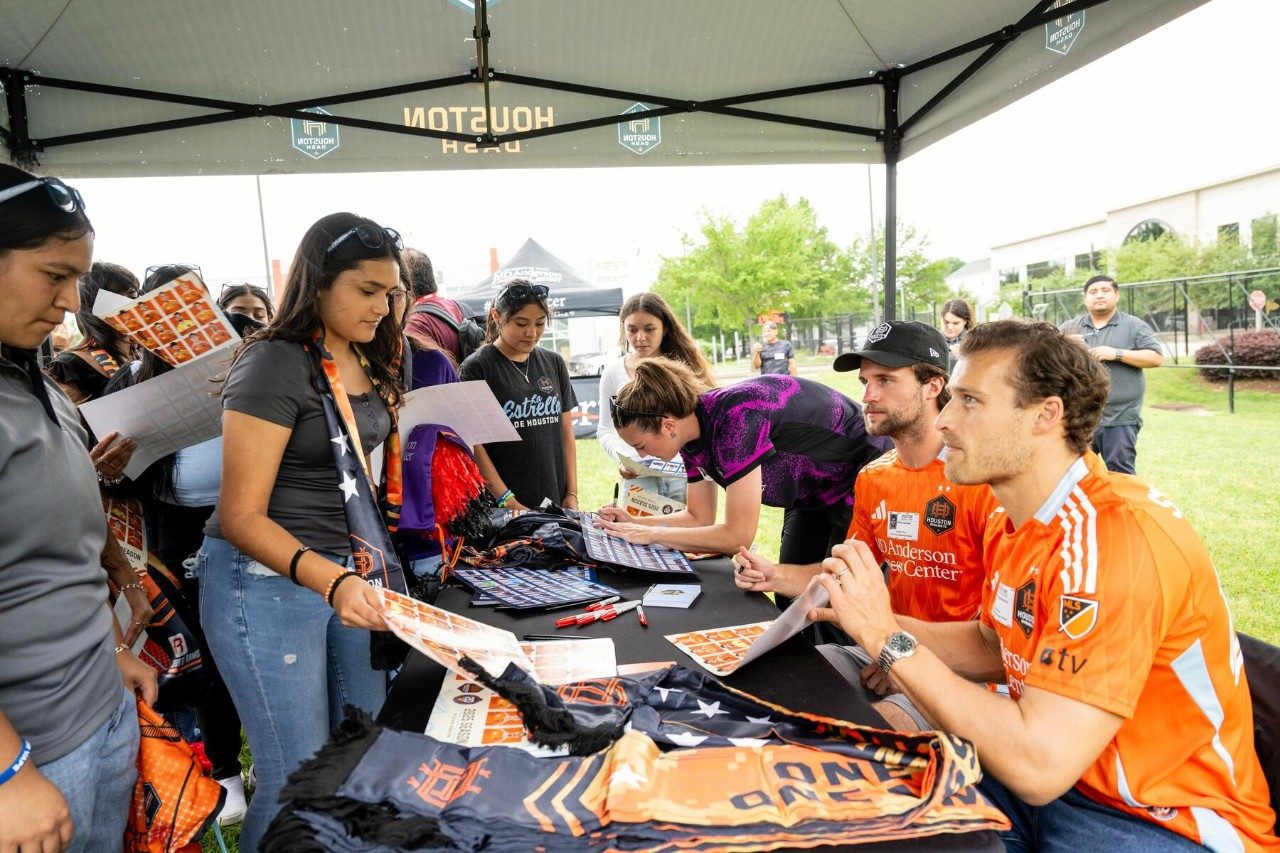MD Anderson, Houston Dynamo FC and the Houston Dash focus on cancer prevention education, community outreach, survivorship celebrations, public service announcements and philanthropic initiatives throughout the season.
Katie Lind, MD Anderson Ambassador
Video Gallery
Support MD Anderson When You Visit the Houston Dynamo FC and Dash Team Store
Visit the Houston Dynamo FC and Dash Team Store at Shell Energy Stadium to get your official team gear. When you make a purchase, you can round up to donate the change from your transaction. Every penny donated supports cancer research and programs at MD Anderson Cancer Center.
I don't know anyone who hasn't been touched in some way by cancer.













